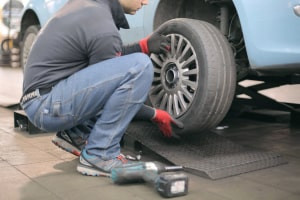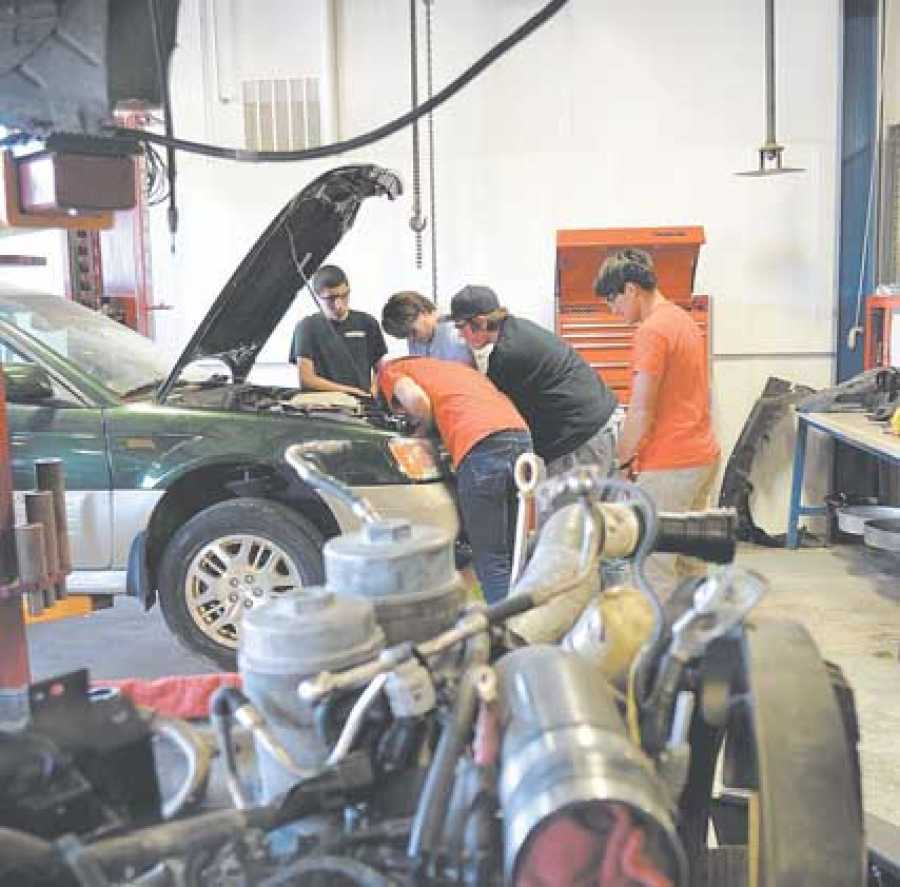
Sometimes a mechanic will misdiagnose a problem or point out a problem that is completely unrelated to the problem. This is a common mistake. Some mechanics will lie to you and convince you that a problem exists. It is best to seek legal counsel or get a second opinion. Before you drop your car off, make sure that all the work is authorized.
An honest mistake is misdiagnosis
It's not unusual for mechanics to make mistakes in diagnosing a vehicle’s problem. Even ASE-certified mechanics can make a misdiagnosis, which can be a logistical and financial nightmare. Here are six common mistakes that can lead to misdiagnosis of automotive problems. If you're concerned about the quality of your mechanic's work, you should seek a second opinion from a third party.

Get a second viewpoint
Sometimes it's wise to get a second opinion after a mechanic has determined that a certain problem with your car is too complicated or too expensive. Additionally, getting another opinion will ensure that the mechanic diagnosed the problem accurately and that you're not paying for unnecessary repairs. It is also helpful to have a second opinion in situations when the mechanic isn’t very experienced or just not being completely honest.
Take legal action
If your mechanic refuses to correct the problem you can file a lawsuit. This action can be taken for many reasons. You can sue the mechanic because he did not properly repair your car, or you may believe that the mechanic has damaged your vehicle. A lawsuit against a mechanic is a lengthy and expensive process. There are many solutions to this type of dispute that can be resolved without going to court.
Before you drop off the car, authorize the work
If you aren't satisfied with the work done on your vehicle, you have the right to request additional work. If you are dropping off your vehicle, it is a good idea to ask for specific repairs. It's a good idea, regardless of the type or extent of work to be authorized before you drop off a car.

Avoid mechanics who are trying to pass on the blame for damage that could be done anywhere else.
Ask about the reputation of any mechanic you visit. While you don't want to go to a mechanic who tries to pass the buck on damage that could have happened anywhere else, you do want a mechanic who puts their customers' best interest first. Check online reviews to ensure a mechanic has a great reputation.
FAQ
How long is an apprenticeship for an automotive mechanic?
The apprenticeship to become an automotive mechanic takes about three years. This includes two years in school and two as an apprentice. The first year of training is spent in the trade. This includes theory and practical skills as well as safety procedures. You will also learn to use tools efficiently and safely during this period. After you have completed the first year of training, you will be able to spend an additional year on-the job learning different trades. These are also the times you can attend formal courses.
The last year of your program will be spent earning qualifications and becoming certified. These include NVQs (National Vocational Qualifications), which are awarded after passing exams covering specific topics within the industry. There are also HNCs (Higher National Certificates), which cover general subjects like management, business administration, customer service, and more. City & Guilds certificates may be available for those who are interested in becoming qualified in specific trades.
What are the requirements of an automotive technician?
You must have graduated high school or GED, with excellent English and math grades. Also, you must be able read and write. Before you can start working, you will have to pass a written exam and take a series practical tests.
Is it hard to be an apprentice mechanic?
It's not simple, but you can learn quickly and there are many avenues for advancement.
You will need patience and perseverance. You must also know how to fix cars, trucks, and motorcycles.
Customers and family members will put pressure on your shoulders to help you succeed. You should not feel pressured into making difficult decisions.
It could be a great job choice if you love fixing cars. It's a job where you can earn a decent salary and build up your business.
Perhaps you prefer a different route. If this is the case, you might want to become a technician.
This is where you use your technical skills to support other workers. Technical support could include helping technicians to troubleshoot issues or teaching them new techniques.
Another option is becoming a service advisor. You will offer assistance and advice to customers when they bring cars to a garage.
Your decision depends on what you want to do. There are many choices available and you can choose what suits you best.
Statistics
- Apprentice mechanics earn significantly less hourly than mechanics who have completed training, with a median wage of approximately $14.50 an hour, according to PayScale. (jobhero.com)
- 52% of Mechanics in the United States think their salaries are enough for the cost of living in their area. (indeed.com)
- There were 749,900 jobs available for automotive service technicians and mechanics in 2016, which is expected to grow by six percent through 2026. (jobhero.com)
External Links
How To
How to properly diagnose your vehicle for repair
First, look at the symptoms of your car to determine if it needs repair. Next, you can follow these steps in order to diagnose your car.
-
Check engine lights. You should inspect the dashboard lights, such as the engine light indicator and the oil pressure gauge. Also, check the battery light indicator. If they have been flashing for more days than usual, it could be a sign that something is wrong with the vehicle.
-
Take a look at the treads. If the tires are worn out, they could cause problems with handling and braking. The treads of the wheels should be inspected as well. They should be clean and smooth. You can do this by taking off the wheels. Use a flashlight to see how well the treads are worn.
-
Monitor the level and consistency of your brake fluid. You must always monitor the level of your brake fluid. This ensures that your brakes work properly. Your brakes may fail if the brake fluid level drops.
-
Check the suspension system. The suspension system in vehicles absorbs vibrations and shocks. It allows for better control, smooth acceleration, and deceleration. A suspension problem can cause your vehicle to feel wobbly and shake uncontrollably. To test whether your vehicle has a suspension issue, try putting weight on the front or rear axle and observe the movement.
-
Take a look at the steering column. Steering columns connect the steering wheels to other parts of the vehicle. Many accidents can cause damage to steering columns. Replace it if your steering column feels loose or unsteady.
-
Observe the exhaust pipe. Exhaust pipes help move gases from the combustion chamber to the atmosphere. If the exhaust pipe is damaged or leaks, harmful fumes can enter your cabin. Also, if your tailpipe is bent, you should fix it immediately.
-
Look under your hood. If you see anything unusual, take a look under the hood. Your engine could be leaking fluids. If you smell something strange coming from your engine compartment you should call a professional technician.
-
Check the air filter. The outside environment can collect dust and other debris in your vehicle's air filters. A dirty air filter causes your vehicle to run poorly. Replace your air filter regularly.
-
Make sure you check the fan belt. The fan belt that connects your vehicle to the transmission is called the engine fan belt. If it breaks, the engine won't turn over. It is easy to replace the belt. You only need a screwdriver or pliers to replace your belt.
-
You should inspect the radiator and hoses. The radiatorhose carries water from your radiator to the engine. It can crack or become damaged and leak hot liquid onto an engine. You only need a pair of needle-nose pliers and a small wire brush to repair the hose.
-
Make sure you have the windshield wipers checked. Windshield wipers use electricity to clean away snow and rain. If they stop working, they could leave streaks on your window glass. Simply change the washer oil to fix the problem.
-
Check the battery cables. The battery cables provide power for the electrical systems in your car. Before you change batteries, disconnect the positive cable. Failure to do so can damage your alternator.
-
Check the headlights. Headlights help you see the road ahead. It can lead to poor visibility if they aren't working properly. You can check the bulbs to make sure they aren't burned out.
-
Pay attention to the lights. The lights are there to warn other drivers if they approach you at night. You could be distracted and cause an accident if one does not work.
-
Make sure you check your brakes. Before you have a collision, brakes slow down your car. If the brakes fail to work correctly, your car could lose control and collide with another vehicle.
-
Change the oil. The oil keeps your engine well lubricated. It prevents metal parts from rusting too quickly. It is recommended that the oil be changed every other month.